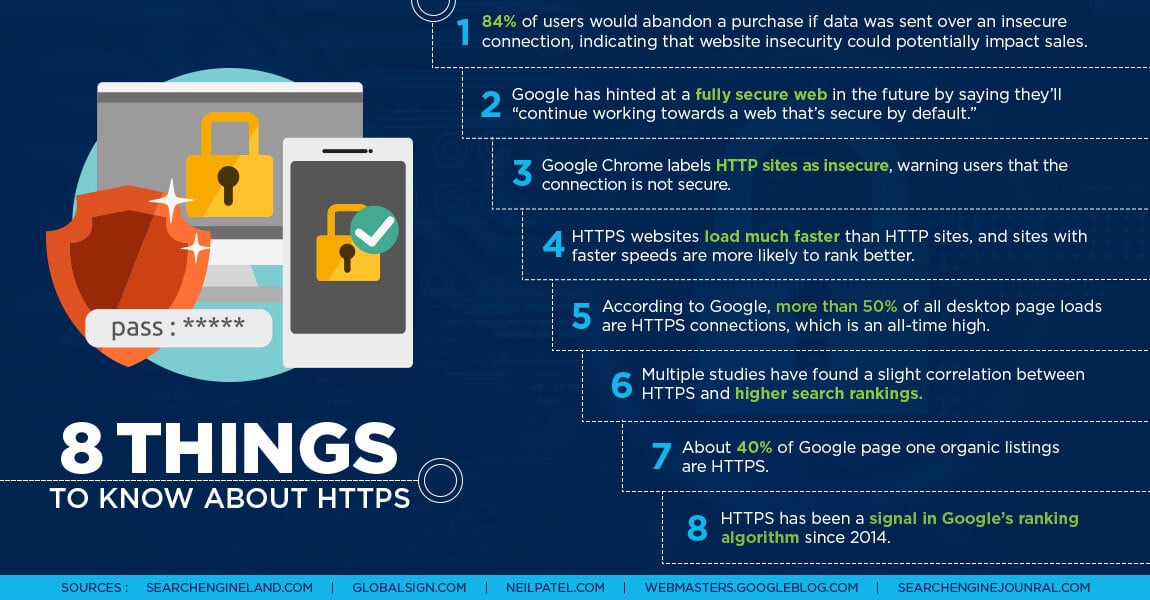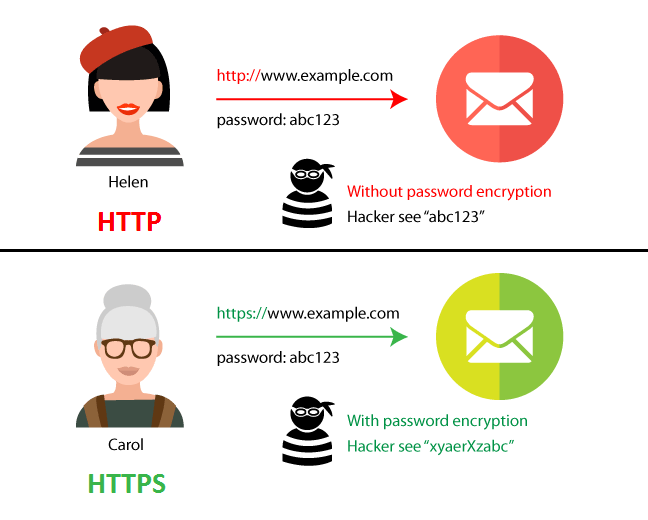Uncover the hidden dangers lurking in your website’s security with this eye-opening comparison of HTTP vs HTTPS protocols. Stay informed!

Image courtesy of via DALL-E 3
Table of Contents
Have you ever wondered why some websites start with “http://” while others start with “https://” when you visit them? The letters “HTTP” and “HTTPS” might seem like a jumble of letters, but they actually play a crucial role in keeping your information safe when you browse the internet. Let’s delve into the world of website security and discover why understanding the difference between HTTP and HTTPS is important for your online safety.
What Are HTTP and HTTPS?
HTTP stands for Hypertext Transfer Protocol, which is a set of rules that allows information to be exchanged on the web. It’s like a language that web browsers and websites use to communicate with each other. On the other hand, HTTPS, which stands for Hypertext Transfer Protocol Secure, adds an extra layer of security by encrypting the data that is transferred between your browser and the website you are visiting. This encryption helps to protect your personal information from being intercepted by cybercriminals.
Why Should We Care?
When you visit websites, you might enter sensitive information like passwords or credit card details. Without HTTPS, this information could be at risk of being stolen by hackers. By using HTTPS, websites ensure that your data is kept safe and secure. Knowing the difference between HTTP and HTTPS can help you make informed decisions about which websites are safe to interact with and protect your personal information while browsing the internet.
Basics of HTTP
What Does HTTP Stand For?
HTTP stands for Hypertext Transfer Protocol. It is like a language that web browsers and websites use to talk to each other and share information. Just like how you speak English or Spanish to communicate, computers use HTTP to understand each other.
How Does HTTP Work?
When you type a website address into your browser, like ‘www.example.com,’ your browser uses HTTP to connect to that website’s server. The server then sends back the information you want to see, like the homepage of a website or a funny cat video.
HTTP is like a postman delivering letters between you and the website. However, unlike real mail, HTTP doesn’t lock the information it carries, which means anyone could peek at it while it’s on its way. This is why HTTP is considered unsecured.
Drawbacks of HTTP
One big problem with using HTTP is that it’s not very safe. Since the information is not locked up, hackers could intercept it while it’s traveling from the website to your computer. Imagine someone reading your private letters before you get them – that wouldn’t be good, right?
Introduction to HTTPS
When you browse the internet, you might have heard about HTTP and HTTPS. But what do these terms really mean, and why should you care about them? Well, let’s break it down in simple terms.
What Are HTTP and HTTPS?
HTTP stands for Hypertext Transfer Protocol, which is a set of rules that allows web browsers and servers to communicate with each other. It helps in transferring information like text, images, and videos between a website and your device.
Now, HTTPS, on the other hand, is a more secure version of HTTP. The “S” in HTTPS stands for Secure, and it uses encryption to protect the data being transferred between your device and the website you’re visiting.
Why Should We Care?
Online safety is crucial when you’re surfing the web. Imagine entering your personal information, such as passwords or credit card details, on a website. Without HTTPS, this sensitive data could be easily intercepted by cybercriminals. That’s where HTTPS comes in to keep your information safe and secure.
Importance of Website Security
When you go online, you might need to share sensitive information like your name, address, or even your credit card details. This information needs to be kept safe from hackers who may try to steal it. This is where website security, especially using HTTPS, plays a crucial role. HTTPS helps to encrypt this data, making it unreadable to anyone who might try to intercept it.

Image courtesy of www.bluecorona.com via Google Images
Building Trust
Imagine visiting a website to buy your favorite toy, but then you notice it’s not secure. Would you feel confident sharing your payment information there? Probably not. Using HTTPS on a website shows visitors that the website cares about their security and can be trusted. It’s like seeing a security guard at the entrance of a building – you feel safer knowing someone is looking out for you.
How to Check If a Website is Secure
When you browse the internet, it’s essential to ensure that the websites you visit are secure. Here’s how you can easily check if a website is using HTTPS and thus providing a safe browsing experience.
Look for the Padlock Icon
One of the simplest ways to determine if a website is secure is by checking for a padlock icon in the address bar of your web browser. This padlock indicates that the website is using HTTPS, which means your connection to the site is encrypted and secure.
Check the URL
Another way to confirm a website’s security is by examining the URL in the address bar. Secure websites will start with “https://” instead of just “http://”. The “s” in “https” stands for secure, indicating that the website has a secure connection in place.
Migrating from HTTP to HTTPS
If you own a website and want to make it more secure, you need to get an SSL certificate. This certificate is like a special passcode that helps encrypt the information that goes back and forth between your website and its visitors. You can think of it as a secret code that only your website and the person visiting it can understand.

Image courtesy of biq.cloud via Google Images
Update Website Links
Once you have your SSL certificate, the next step is to update all the links on your website to use HTTPS instead of HTTP. This includes not only the links within your website but also any links leading to other websites. By doing this, you ensure that all the information shared on your website is protected and secure.
Common Misconceptions About HTTPS
There are some common misunderstandings about HTTPS that we need to clear up. Let’s address a couple of myths and explain the facts.
Myth: HTTPS is Only for E-Commerce
Some people believe that HTTPS is only necessary for websites that involve online shopping or financial transactions. However, that’s not true! HTTPS is essential for all websites, regardless of whether they sell products or not. It helps keep all data secure, including personal information like login details and browsing history.
Myth: HTTPS Slows Down Websites
Another misconception is that using HTTPS can slow down a website. In the past, this may have been true, but with advancements in technology, the impact on website speed is minimal. In fact, the security benefits of HTTPS far outweigh any potential small decrease in speed. So, don’t worry about HTTPS making your favorite websites load slower!
Summary
In this article, we discussed the importance of HTTP and HTTPS in ensuring website security and internet safety. We explored the difference between HTTP and HTTPS and why knowing about these protocols is crucial for anyone who uses websites regularly.

Image courtesy of www.digitalhill.com via Google Images
Key Takeaways
HTTP, which stands for Hypertext Transfer Protocol, is an unsecured web protocol used for internet communication. It lacks encryption, making it susceptible to security risks.
HTTPS, or Hypertext Transfer Protocol Secure, on the other hand, encrypts data transfer, providing a secure connection between a web browser and a website. It helps protect sensitive information like passwords and credit card numbers.
It’s essential to always look for the padlock icon and ‘https’ at the beginning of a website’s URL to ensure it is secure. Website owners can upgrade their security by obtaining an SSL certificate and updating all links to use HTTPS.
Contrary to common misconceptions, HTTPS is not exclusive to e-commerce sites and does not significantly slow down websites. It is beneficial for all types of websites and plays a crucial role in building trust with visitors.
Want to turn these SEO insights into real results? Seorocket is an all-in-one AI SEO solution that uses the power of AI to analyze your competition and craft high-ranking content.
Seorocket offers a suite of powerful tools, including a Keyword Researcher to find the most profitable keywords, an AI Writer to generate unique and Google-friendly content, and an Automatic Publisher to schedule and publish your content directly to your website. Plus, you’ll get real-time performance tracking so you can see exactly what’s working and make adjustments as needed.
Stop just reading about SEO – take action with Seorocket and skyrocket your search rankings today. Sign up for a free trial and see the difference Seorocket can make for your website!
Frequently Asked Questions (FAQs)
Is HTTPS Always Secure?
While HTTPS provides a layer of security by encrypting data transfer between your browser and the website you’re visiting, it doesn’t guarantee complete protection. There are still vulnerabilities that cybercriminals could exploit. However, HTTPS significantly reduces the risk of data interception and manipulation, making it a safer option than HTTP.
Can HTTP Websites Still Be Safe?
In some cases, HTTP websites can still be safe. Websites that don’t require users to input personal information or sensitive data may not necessarily need HTTPS. However, for websites that handle passwords, credit card information, or any form of confidential data, HTTPS is strongly recommended for better protection against cyber threats.
Does HTTPS Cost Money?
Obtaining an SSL certificate, which is necessary for enabling HTTPS on a website, does come with a cost. However, there are various types of SSL certificates available at different price points. Some web hosting providers may even offer SSL certificates for free as part of their hosting packages. It’s essential to explore different options to find one that fits your budget and security needs.







